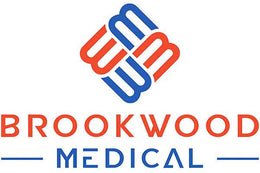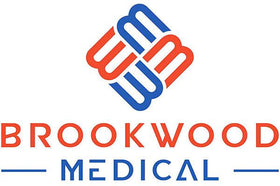The Essential Role of Masks in Our Daily Lives

In recent years, the conversation around health and safety has taken on a new dimension. The simple act of wearing a mask, something that was once reserved for specific situations, has now become a part of our daily routines. As we navigate through various environments—whether at work, in schools, or while enjoying our leisure time—masks have proven to be indispensable tools for protecting our health. In this article, we will explore the importance of wearing masks in daily life and examine why choosing the right type, like a **sports face mask**, is crucial for our health and safety.
The Evolution of Masks in Public Health
Historically, masks were utilized in healthcare settings, particularly by medical professionals during surgeries and in high-risk environments. However, the recent global health crises have expedited the shift in perception about masks. Today, wearing a mask is not just about individual safety; it's a collective responsibility that emphasizes community well-being. Understanding the evolution of masks can shed light on their importance today.
The Shift in Public Perception
At first, many individuals viewed masks with skepticism, often questioning their efficacy. Over time, accumulating evidence and public health messaging have changed this mindset. Masks, especially those that adhere to specific guidelines, have been identified as a key barrier against pathogens. This change marks a crucial point in public health strategy and highlights why it's vital to integrate masks into our daily practices.
Why Wearing Masks is Essential
There are numerous reasons why wearing a mask is essential in our day-to-day lives. From preventing the spread of disease to enhancing personal comfort, the importance is multi-faceted.
Protection Against Infectious Diseases
One of the primary reasons for wearing masks is to protect yourself and others from infectious diseases. Notably, diseases that spread through respiratory droplets can be significantly curtailed when masks are used effectively. The **sports face mask** is designed not only for comfort but also for enhanced filtration, making it suitable for those who may be active while needing protection.
The Role of Masks in Preventing Disease Spread
When we speak, cough, or sneeze, tiny droplets are released into the air. Masks act as a physical barrier, reducing the number of droplets that can escape into the environment. The use of masks has shown to decrease transmission rates in various studies, emphasizing their importance in settings where social distancing may be challenging.
Different Types of Masks for Various Activities
Not all masks provide the same level of protection, nor are they all suited for different activities. It’s important to select a mask based on the environment and needs. Here, we will break down some common types of masks:
Cloth Masks
Cloth masks are a popular choice for everyday wear. They are reusable, washable, and available in a variety of designs and styles. However, effectiveness depends on the fabric used. A multi-layer cloth mask can provide adequate protection for public settings.
Medical Masks
Medical masks, such as surgical masks, are designed for single-use and offer a higher level of protection than cloth masks. They excel in settings where exposure risk is higher. Nevertheless, they are not intended for heavy physical exertion.
Sports Face Masks
For those who lead an active lifestyle, a **sports face mask** is an excellent solution. These masks are tailored to accommodate movement, sweat, and breathing during physical activities. They are often made with breathable materials that prevent overheating while still offering the necessary protection.
Creating a Mask Habit
Incorporating masks into daily life may seem daunting but creating a habit can ease the transition. Here are some effective strategies to establish a mask-wearing routine:
- Keep Masks Accessible: Have masks readily available in places where you need them, such as your car, bag, or at the entrance of your home.
- Educate Your Family: Discuss the importance of wearing masks with your family members to foster understanding and acceptance.
- Make it Stylish: Opt for fashionable masks that reflect your personal style—it’s much easier to wear a mask that you love!
- Incorporate into Daily Activities: Make it a habit to wear masks in contexts where it is recommended, such as during errands or public gatherings.
Combining Masks with Other Health Safety Measures
While wearing a mask is a powerful tool for reducing the spread of infectious diseases, it is even more effective when combined with other health safety measures. Here are several complementary strategies:
Social Distancing
Maintaining physical distance from others remains critical, particularly in crowded places. A mask acts as an additional layer of safety, but it should not replace the need for distance.
Hand Hygiene
Regularly washing your hands or using hand sanitizer can significantly reduce your risk of infection. Remember to wash your hands before putting on or removing your mask to minimize contamination.
Staying Informed
Keeping yourself informed about the latest health guidelines can empower you to make knowledgeable choices regarding mask use and other preventive measures. Trusted health organizations provide ongoing updates, so make sure to stay tuned.
Addressing Common Misconceptions
Despite widespread information about masks, some misconceptions persist. Addressing these myths is crucial for increasing compliance and understanding.
Myth: Masks Are Only for Sick Individuals
Many people mistakenly believe that masks should only be worn by those who are ill. In reality, masks protect both the wearer and those around them by reducing the transmission of viruses.
Myth: Masks Make Breathing Difficult
While some individuals may find wearing a mask uncomfortable at first, most people adapt quickly. Properly designed masks, particularly **sports face masks**, facilitate breathability during physical activity without sacrificing protection.
Myth: Children Don’t Need Masks
Children can transmit viruses just like adults. It is essential to educate both children and their caregivers about the importance of mask-wearing in reducing the risk of transmission.
Real-World Impact of Mask-Wearing
Numerous studies have documented the real-world impact of mask-wearing in various communities. Regions that adopted mask mandates witnessed notable declines in infection rates, supporting the argument for widespread use of masks as an effective public health measure.
A Global Perspective
Countries that prioritized mask-wearing often experienced better outcomes during health crises. Examining these case studies can offer valuable insights into the efficacy of masks, especially as we look toward future health challenges.
Empowering One Another Through Mask-Wearing
Ultimately, wearing a mask is about more than just protecting oneself; it is a profound act of community solidarity. When individuals take the responsibility to wear masks, they reflect a commitment to the health and safety of those around them.
Encouraging Community Participation
Promoting programs that encourage mask-wearing can enhance community awareness. Initiatives could include mask distribution events or community challenges that foster engagement.
The Future of Masks in Our Lives
As we move into a new era of public health awareness, it is clear that masks will remain an important part of our daily routine for the foreseeable future. They are not just temporary solutions; instead, they symbolize a collective duty toward safeguarding each other's health.
Embrace Change and Stay Safe
As we adapt to an evolving world, let’s embrace the importance of wearing masks in our daily lives. By choosing to wear a mask, especially a **sports face mask** during physical activities, we not only protect ourselves but also demonstrate care for those around us. So, let’s make wearing masks an essential part of our lives and move forward together, ensuring a healthier future for everyone.






